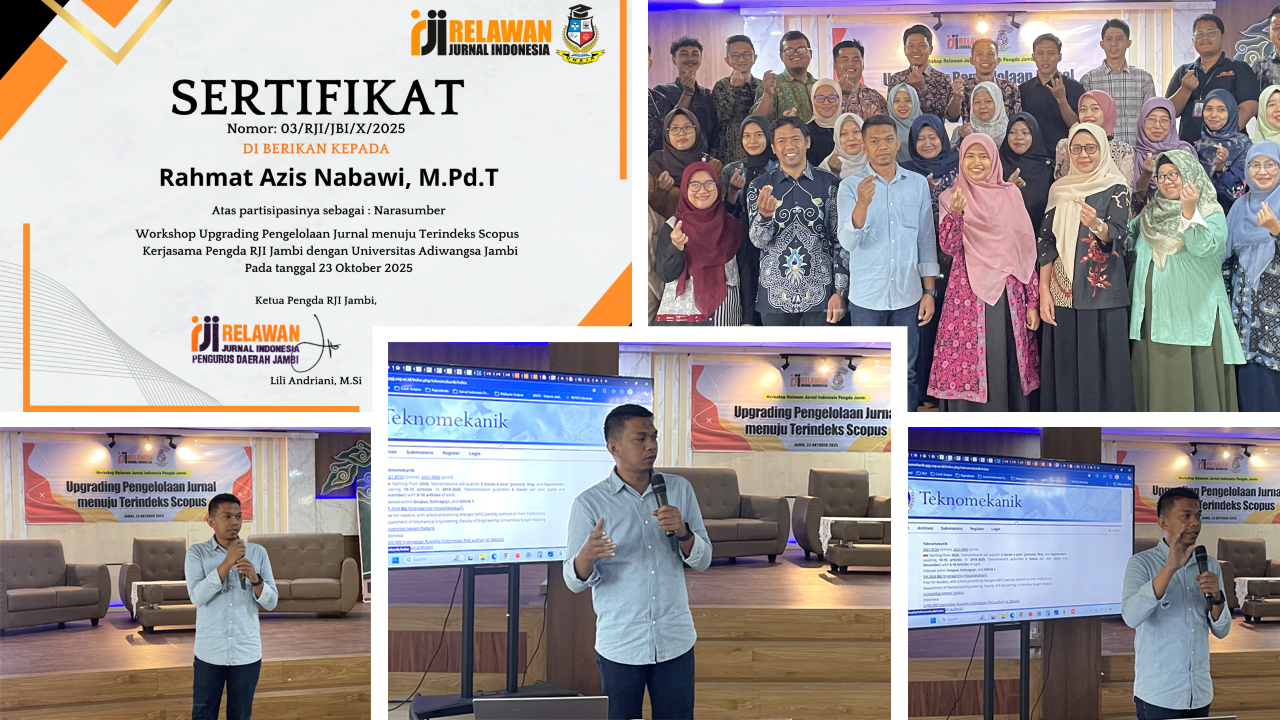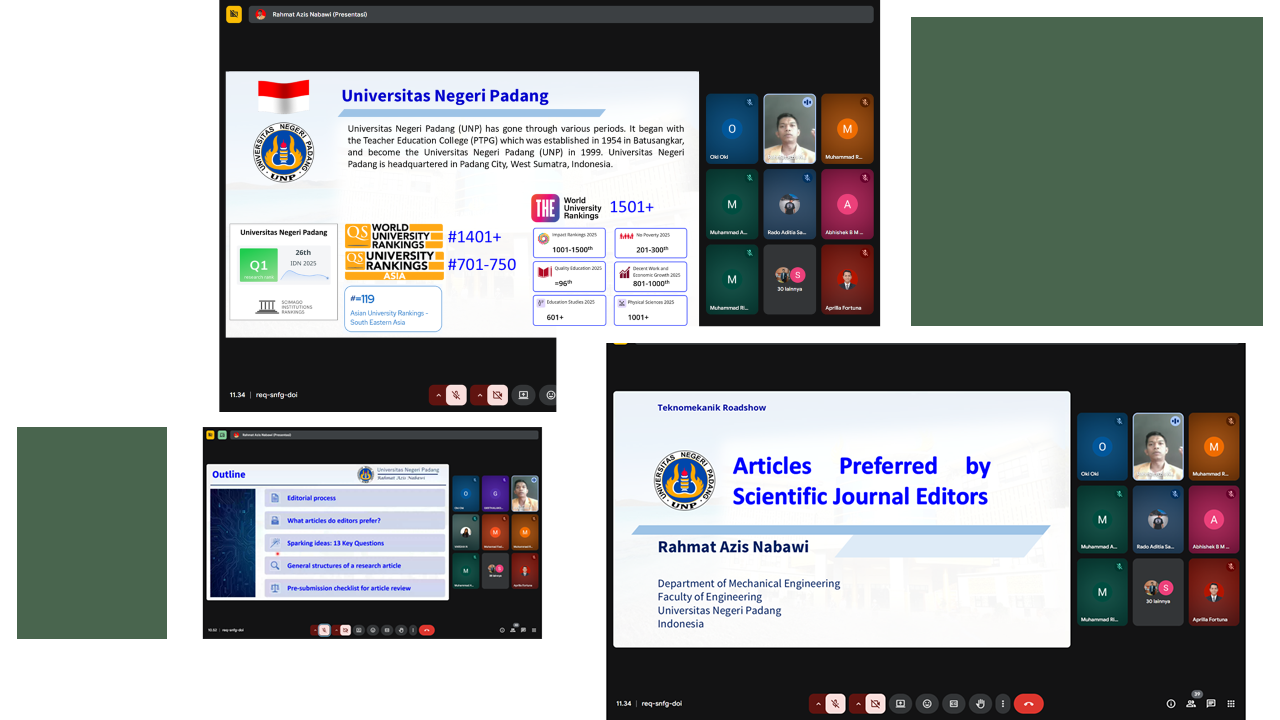Comparison of variation in the building shapes and the window-to-wall ratio by concerning energy consumption for thermal comfort and lighting
DOI:
https://doi.org/10.24036/teknomekanik.v6i2.27972Keywords:
Shape effects, Window and wall, Luminaire optimization, Energy optimizationAbstract
Currently, an influential factor contributing to thermal comfort home design is the incorporation of energy-efficient passive design principles. It is exemplified by strategic window placement, the utilization of thermally efficient materials, and effective insulation. It exerts a substantial influence on thermal comfort and electrical consumption. This paper examines the effect of building shape and window-to-wall ratio (WWR) on thermal comfort and lighting energy consumption in residential houses in tropical climates. The lighting electricity and the adaptive thermal discomfort hours of 30 different models of houses were obtained using OpenStudio and EnergyPlus simulation software. The models were developed for three building shapes (square, rectangle, and L-shaped), and each model was varied in five models of window-to-wall ratios. Results indicate that the square-shaped model with a WWR of 10% will provide the lowest energy consumption in thermal comfort had 420.45 kWh/m2. On the other side, the lowest energy consumption in lighting is the square-shaped model with a WWR of 50% had 507.95 kWh/m2. Thus, the recommendation is to use the square-shaped house that represents the most efficient air conditioning system while the other WWR set also produce the most natural luminaire. It is because the percentage of WWR increased will result in more energy consumption in air cooling but slightly lower energy consumption in lighting. However, when considering aesthetics and freshness, the WWR of the 50% model will offer a better deal.
Downloads
References
A. E. Ahmed, M. Sh. Suwaed, A. M. Shakir, and A. Ghareeb, “The impact of window orientation, glazing, and window-to-wall ratio on the heating and cooling energy of an office building: The case of hot and semi-arid climate,” Journal of Engineering Research, Oct. 2023, https://doi.org/10.1016/j.jer.2023.10.034
P. Kishore, N. Selvam, S. Didwania, and G. Augenbroe, “Understanding BIPV performance with respect to WWR for energy efficient buildings,” Energy Reports, vol. 8, pp. 1073–1083, Nov. 2022, https://doi.org/10.1016/j.egyr.2022.10.371
I. Sartori et al., “Sub-hourly measurement datasets from 6 real buildings: Energy use and indoor climate,” Data Brief, vol. 48, Jun. 2023, https://doi.org/10.1016/j.dib.2023.109149
J. Zhao et al., “Long-term prediction of the effects of climate change on indoor climate and air quality,” Environ Res, p. 117804, Nov. 2023, https://doi.org/10.1016/j.envres.2023.117804
A. Hermawansyah, A. Kurniawan, S. L. Y. Win, N. Qosim, S. B. Biki, and A. Wiyono, “Efficiency comparison of fin heatsink models using solidworks thermal analysis,” Journal of Engineering Researcher and Lecturer, vol. 2, no. 2, pp. 43–49, Jul. 2023, https://doi.org/10.58712/jerel.v2i2.84
H. Amrico and R. Dalimi, “Economic Analysis Of Waste Power Plants Based On The Economic Scale-Case Study Merah Putih Waste Power Plant,” Jurnal Pendidikan Teknologi Kejuruan, vol. 6, no. 2, pp. 156–162, May 2023, https://doi.org/10.24036/jptk.v6i2.33223
A. Zulhendrik, S. Samuel, and J. R. A. Jimenez, “Taperless blade manufacturing using NREL’S 833 air foil on horizontal axis wind turbine,” Journal of Engineering Researcher and Lecturer, vol. 1, no. 1, pp. 7–11, Nov. 2022, https://doi.org/10.58712/jerel.v1i1.3
P. B. Purup and S. Petersen, “Rapid simulation of various types of HVAC systems in the early design stage,” in Energy Procedia, Elsevier Ltd, 2017, pp. 469–474. https://doi.org/10.1016/j.egypro.2017.07.293
S. R.P. Primandari et al., “Triglycerides of crude palm oil to biokerosene: Studies on electrolysis and electromagnetic effect,” Journal of Applied Engineering and Technological Science (JAETS), vol. 5, pp. 557–568, Dec. 2023, https://doi.org/10.37385/jaets.v5i1.3127
D. Yuvenda et al., “Combustion and emission characteristics of CNG-Diesel dual fuel engine with variation of air fuel ratio,” Automotive Experiences, vol. 5, no. 3, pp. 507–527, Apr. 2022, https://doi.org/10.31603/ae.7807
S. R. P. Primandari and A. Arafat, “Feasibility of waste cooking oil as biodiesel feedstock,” J Phys Conf Ser, vol. 1940, no. 1, p. 012081, Jun. 2021, https://doi.org/10.1088/1742-6596/1940/1/012081
S. K. Alghoul, H. G. Rijabo, and M. E. Mashena, “Energy consumption in buildings: A correlation for the influence of window to wall ratio and window orientation in Tripoli, Libya,” Journal of Building Engineering, vol. 11, pp. 82–86, May 2017, https://doi.org/10.1016/J.JOBE.2017.04.003
F. Ashar, Y. Marzeki, F. Rifwan, and N. Septiani, “Perceptions of trans padang bus drivers on type a terminal locations case study: Anak Air type a terminal,” Jurnal Pendidikan Teknologi Kejuruan, vol. 5, no. 3, pp. 98–105, August 2022, https://doi.org/10.24036/jptk.v5i3.28223
Statistic Centre of West Sumatera, “Households and average number of household members by regency/city in the province of West Sumatra 2020-2022,” https://sumbar.bps.go.id/indicator/12/246/1/rumah-tangga-dan-rata-rata-banyaknya-anggota-rumah-tangga-menurut-kabupaten-kota.html
R. Dhona and R. Dalimi, “Economic analysis of solar photovoltaic power plant planning at Taman Melati Depok apartment,” Jurnal Pendidikan Teknologi Kejuruan, vol. 6, no. 2, pp. 98–105, May 2023, https://doi.org/10.24036/jptk.v6i2.32823
Autodesk Revit 2024, “Occupancy schedules,” https://help.autodesk.com/view/RVT/2024/ENU/?guid=GUID-D72DDB68-621C-4258-96FE-BEAD337B960E
Autodesk Revit 2023, “Space type data for energy analysis,” https://help.autodesk.com/view/RVT/2023/ENU/?guid=GUID-E5AB77B4-B808-4464-9D93-6A36914F4BF2
I. B. K. Sugirianta, I. G. A. M. Sunaya, and I. G. N. A. D Saputra, “Optimization of tilt angle on-grid 300Wp PV plant model at Bukit Jimbaran Bali,” J Phys Conf Ser, vol. 1450, no. 1, p. 012135, Feb. 2020, https://doi.org/10.1088/1742-6596/1450/1/012135
B. Kaouther, A. Othman, and M. Besbes, “estimation of global and direct solar radiation in Tunisia based on geostationary satellite imagery,” in 2018 IEEE PES/IAS PowerAfrica, IEEE, Jun. 2018, pp. 190–194. https://doi.org/10.1109/PowerAfrica.2018.8521155
Design Builder, “General lighting,” https://designbuilder.co.uk/helpv7.0/Content/_General_lighting.htm

Downloads
Published
Issue
Section
License
Copyright (c) 2023 Andre Kurniawan, Remon Lapisa, Muhammad Yasep Setiawan, Bulkia Rahim, Budi Syahri (Author)

This work is licensed under a Creative Commons Attribution 4.0 International License.






